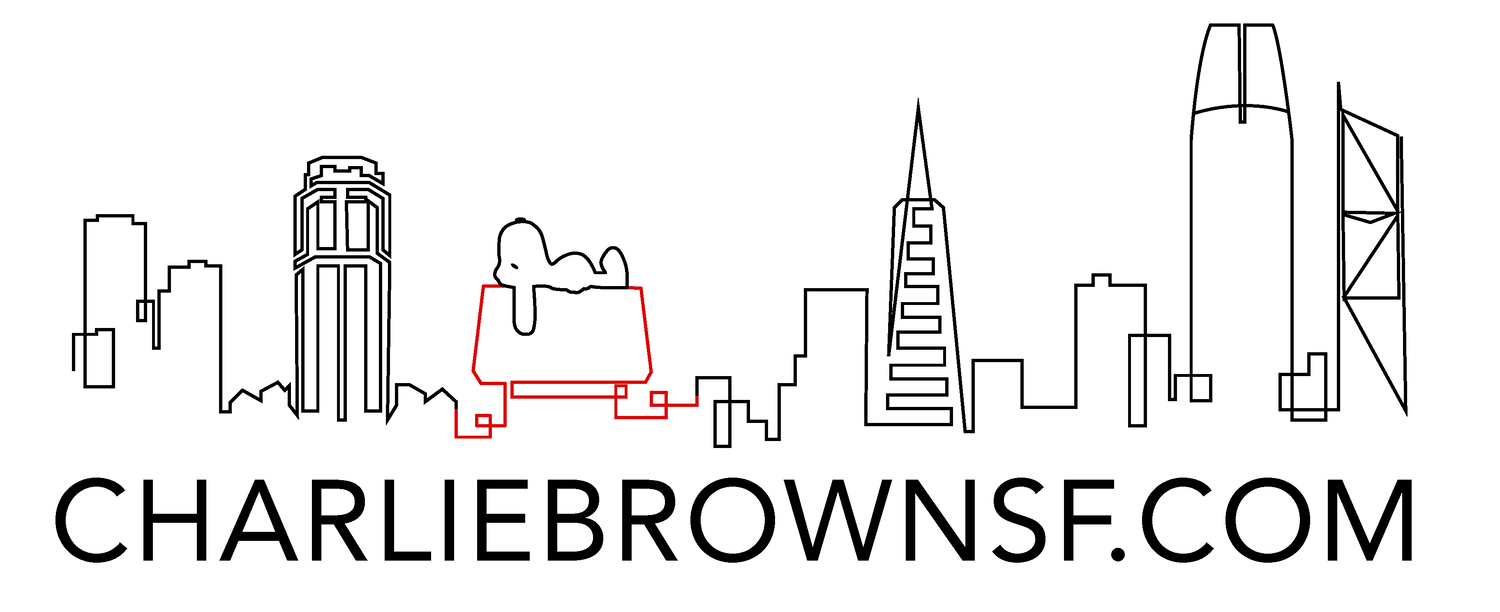Lets work together!
charlie@charliebrownsf.com
415-722-3493
Welcome to our Blog!

MarketTracker Bay Area - December 2025 from CharlieBrownSF
December 2025 Bay Area Real Estate Market Summary
Median single-family home prices marked a new two-year high in October.
Inventory continues to be a huge issue in both the single-family home and condo markets.
Listings aren’t spending very much time on the market, with the average single-family home being sold in just 14 days.

MarketTracker North Bay - December 2025 from CharlieBrownSF
December 2025 North Bay Real Estate Market Summary
The median single-family home in Marin County sold for 10% less than it did just one year ago in November.
Inventories in the North Bay dropped by more than 20% when compared to last month!
Despite the inventory dropoff, listings are spending quite a bit more time on the market than they were last year.

MarketTracker East Bay - December 2025 from CharlieBrownSF
December 2025 East Bay Real Estate Market Summary
Median sale prices are largely on the decline throughout the East Bay.
The East Bay has continued to buck the trend, as inventories are roughly flat on a year-over-year basis.
As inventories remain flat, listings are spending more time on the market.

MarketTracker Silicon Valley - December 2025 from CharlieBrownSF
December 2025 Silicon Valley Real Estate Market Summary
Single-family median sale prices declined across the board for the first time in more than a year in November!
Despite declines in price across the board, inventories are down more than 10% year-over-year.
The average single-family home in Santa Cruz County is spending more than twice as much time on the market when compared to last year.

MarketTracker San Francisco - December 2025 from CharlieBrownSF
December 2025 San Francisco Real Estate Market Summary
Mortgage rates continue to slowly move downwards, as the Federal Reserve continues its rate cuts.
Inventories remain high, as new supply is hitting the market faster than existing homes are being sold.
Last Wednesday, the Fed lowered the federal funds rate by another 25 basis points, bringing the target range to 3.50%-3.75%.

MarketTracker San Francisco - November 2025 from CharlieBrownSF
November 2025 San Francisco Real Estate Market Summary
Median single-family home prices marked a new two-year high in October.
Inventory continues to be a huge issue in both the single-family home and condo markets.
Listings aren’t spending very much time on the market, with the average single-family home being sold in just 14 days.

MarketTracker Greater Bay Area - November 2025 from CharlieBrownSF
November 2025 Greater Bay Area Real Estate Market Summary
San Francisco reaches unprecedented market tightness with single-family homes hitting two-year price highs and inventory dropping over 35% year-over-year, while both property types firmly establish seller's market status.
The Bay Area experiences a dramatic "inventory overcorrection" in October, with most regions swinging from elevated summer levels to below-normal supply, driven primarily by sharp declines in new listings rather than increased sales.
Condo markets across the region face mounting pressure with widespread price declines and dramatically extended days on market, particularly in Silicon Valley where some areas see listings taking more than twice as long to sell.
The property type divide intensifies as single-family homes maintain ultra-competitive conditions with rapid sales, while condos struggle with extended market times despite favorable buyer conditions.

MarketTracker Silicon Valley - November 2025 from CharlieBrownSF
November 2025 Silicon Valley Real Estate Market Summary
Median sale prices for condos fell precipitously in Silicon Valley this month.
Inventory levels have overcorrected and are now lower than they were last year.
Listings are spending much more time on the market than this time last year.

MarketTracker East Bay - November 2025 from CharlieBrownSF
November 2025 East Bay Real Estate Market Summary
Median sale prices for condos continue to lag where they were last year.
Inventories are surprisingly static on a year-over-year basis
Listings are spending a lot more time on the market than they were last year

MarketTracker North Bay - November 2025 from CharlieBrownSF
November 2025 North Bay Real Estate Market Summary
Median sale prices are mostly in line with where they were around this time last year. The North Bay has seen inventories crater on a year-over-year basis, as considerably fewer homes hit the market. Despite lower inventory levels, listings are still spending more time on the market on a year-over-year basis.

MarketTracker North Bay - October 2025 from CharlieBrownSF
October 2025 North Bay Real Estate Market Summary
Median sale prices have remained roughly stagnant year-over-year
Inventories declined on a year-over-year basis for the first time in months!
The average listing is quite a bit more time on the market.

MarketTracker East Bay - October 2025 from CharlieBrownSF
October 2025 East Bay Real Estate Market Summary
Single-family home median sale prices declined slightly on a year-over-year basis.
Inventories remain at a level that’s slightly higher than this time last year.
Listings are spending a lot more time on the market than they were last year, with single-family listings spending more than 20% longer on the market.

MarketTracker Silicon Valley - October 2025 from CharlieBrownSF
October 2025 Sillicon Valley Real Estate Market Summary
Median sale prices for condos declined across the board for the second month in a row.
Single-family home inventories declined year-over-year for the first time in months.
As inventories fall, listings are being bought up at breakneck pace!

MarketTracker Bay Area - October 2025 from CharlieBrownSF
October 2025 Bay Area Real Estate Market Summary
September marked a significant shift in Bay Area inventory dynamics, with most regions experiencing year-over-year declines for the first time in months, driven by increased sales velocity rather than new listing growth.
San Francisco stands out with dramatic inventory declines of over 30% and surging single-family home prices, while other regions show more modest price movements within historical bands.
Market velocity continues to accelerate across most Bay Areas regions, with listings selling faster despite percentage increases in days on market, as absolute numbers remain remarkably low.
The region-wide trend toward seller's markets intensifies as inventory normalization continues, with San Francisco's condo market approaching seller's territory and other regions showing steady movement in that direction.

MarketTracker San Francisco - October 2025 from CharlieBrownSF
October 2025 San Francisco Real Estate Market Summary
Affordability remains an issue nationwide, as monthly P&I payments ticked up by 2.90% year-over-year.
Mortgage rates are finally starting to decline, as we enter a rate-cutting cycle.
Inventories are still growing at a faster rate than existing home sales.
Quick observation about Macroeconomics/The Broader Market

MarketTracker San Francisco - September 2025 from CharlieBrownSF
September 2025 San Francisco Real Estate Market Summary
Median sale prices remained roughly flat on a year-over-year basis in San Francisco.
Inventory levels continue to creep lower in both the single-family home and condo markets.
Condos are actually spending more time on the market on a year-over-year basis.

MarketTracker North Bay - September 2025 from CharlieBrownSF
September 2025 North Bay Real Estate Market Summary
Median sale prices show mixed performance across the Bay Area, with Silicon Valley maintaining strength while the East Bay experiences six consecutive months of declines.
Inventory dynamics vary dramatically by region - San Francisco faces severe shortages while most other areas see rising inventory levels.
Despite varying inventory conditions, listings are spending significantly more time on the market across nearly all Bay Area markets.
Market conditions range from highly competitive sellers' markets in core Silicon Valley to more balanced or buyer-friendly conditions in outlying areas.

MarketTracker East Bay - September 2025 from CharlieBrownSF
September 2025 East Bay Real Estate Market Summary
In August, median sale prices increased on a year-over-year basis in the East Bay for the first time in six months!
Despite median sale price growth, inventories remain at an elevated level on a year-over-year basis.
While inventories are normalizing, the average listing is still spending quite a bit more time on the market when compared to last year.

MarketTracker Silicon Valley - September 2025 from CharlieBrownSF
Septemeber 2025 Silicon Valley Real Estate Market Summary
Median sale prices increased across the board in the single-family home market in August.
Single-family home inventory levels are actually lower on a year-over-year basis for the first time in months.
Single-family home listings continue to be snapped up at a breakneck pace.

MarketTracker Bay Area - September 2025 from CharlieBrownSF
September 2025 Bay Area Real Estate Market Summary
August marked a turning point for Bay Area real estate, with single-family home prices rebounding in most regions while condo markets continue to struggle with volatility and declines.
Inventory levels are normalizing across the region after summer peaks, with San Francisco reaching some of the lowest supply levels ever recorded while other areas remain elevated year-over-year.
Despite inventory normalization, listings are spending significantly more time on market throughout most of the Bay Area, reflecting increased buyer selectivity.
Market dynamics strongly favor single-family homes over condos, with San Francisco becoming a dual seller's market while other regions maintain the traditional split between property types.



